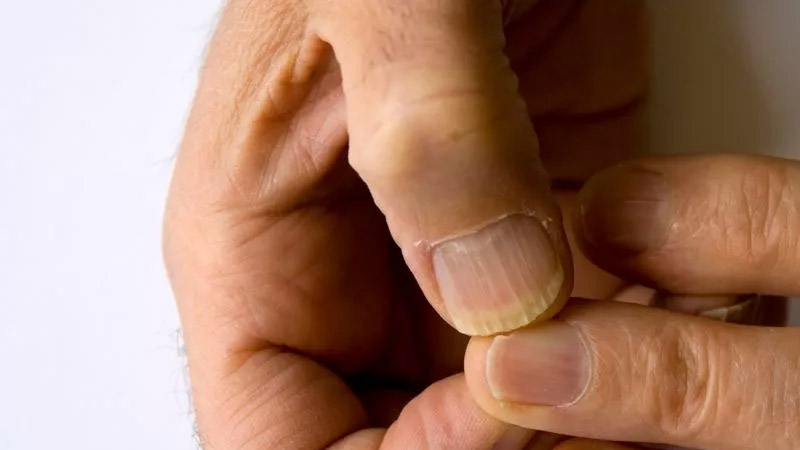A groundbreaking study by the National Institutes of Health (NIH) has identified a rare nail condition that could be indicative of a serious genetic disorder known as BAP1 tumor predisposition syndrome. This syndrome significantly increases the risk of developing various cancers, including those affecting the skin, eyes, kidneys, and the lining of the chest and abdomen.
The study, which involved 47 people from 35 different families, made this discovery when one particularly observant participant reported subtle changes in her nails during a genetic evaluation. This observation led the researchers to conduct a thorough evaluation of other participants, revealing a pattern of benign nail abnormalities known as onychopapillomas.
Alexandra Lebensohn, co-senior author and genetic counselor, emphasized the importance of feedback from this patient, which prompted further investigation. “Her comment prompted us to systematically evaluate other participants for nail changes and discover this new finding,” Lebensohn saying.
Onychopapillomas are characterized by a band of color along the nail, which usually appears white or red. This condition can also cause thickening under the discolored area and at the end of the nail. The study found that among participants over the age of 30 with BAP1 tumor predisposition syndrome, a staggering 88 percent had onychopapillomas affecting multiple nails.
Based on these findings, researchers now advocate for nail screenings, especially in patients with a family history of melanoma, a serious and life-threatening skin cancer. The World Health Organization has highlighted melanoma as a condition that requires early detection due to its severity.
While changes in moles or skin lesions are well-known indicators of melanoma, the study authors emphasize the importance of recognizing more subtle signs, such as nail abnormalities. Early recognition of these signs could be crucial for timely diagnosis and treatment.
Edward Cowen, chief of NIH Dermatology Consultation Services, noted the rarity of these findings in the general population and suggested that multiple nail changes indicative of onychopapillomas should prompt consideration of BAP1 tumor predisposition syndrome. “This finding is rarely seen in the general population, and we believe that the presence of nail changes suggestive of onychopapillomas on multiple nails should prompt consideration of a diagnosis of BAP1 tumor predisposition syndrome,” Cowen said.
Mutations in the BAP1 gene, which normally functions as a tumor suppressor, are responsible for the syndrome. Co-senior author Raffit Hassan highlighted the collaborative nature of the discovery, saying: “This discovery is an excellent example of how multidisciplinary teams and natural history studies can reveal insights into rare diseases.” This research not only advances understanding but also highlights the critical role of patient observations in the diagnosis of complex diseases.


